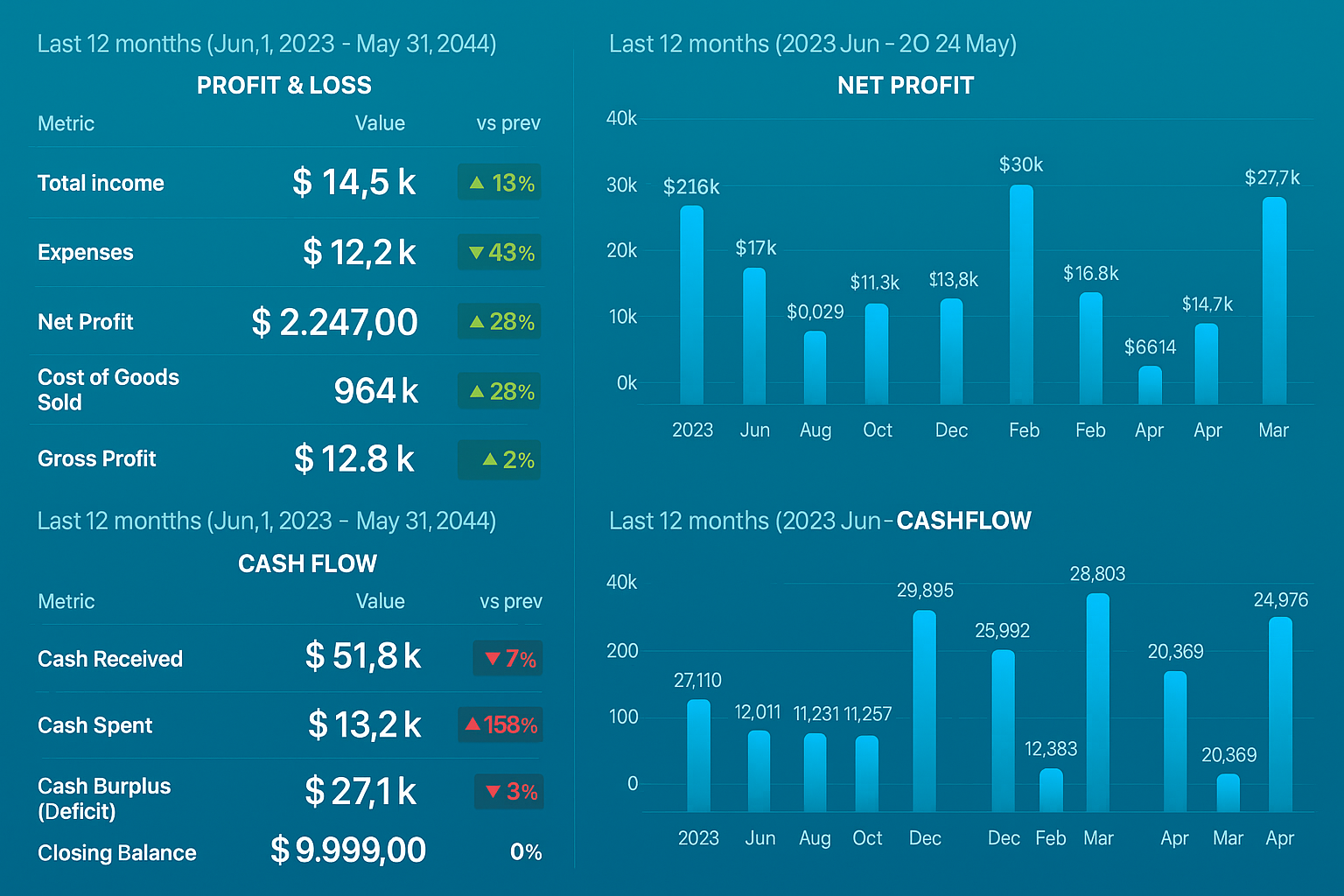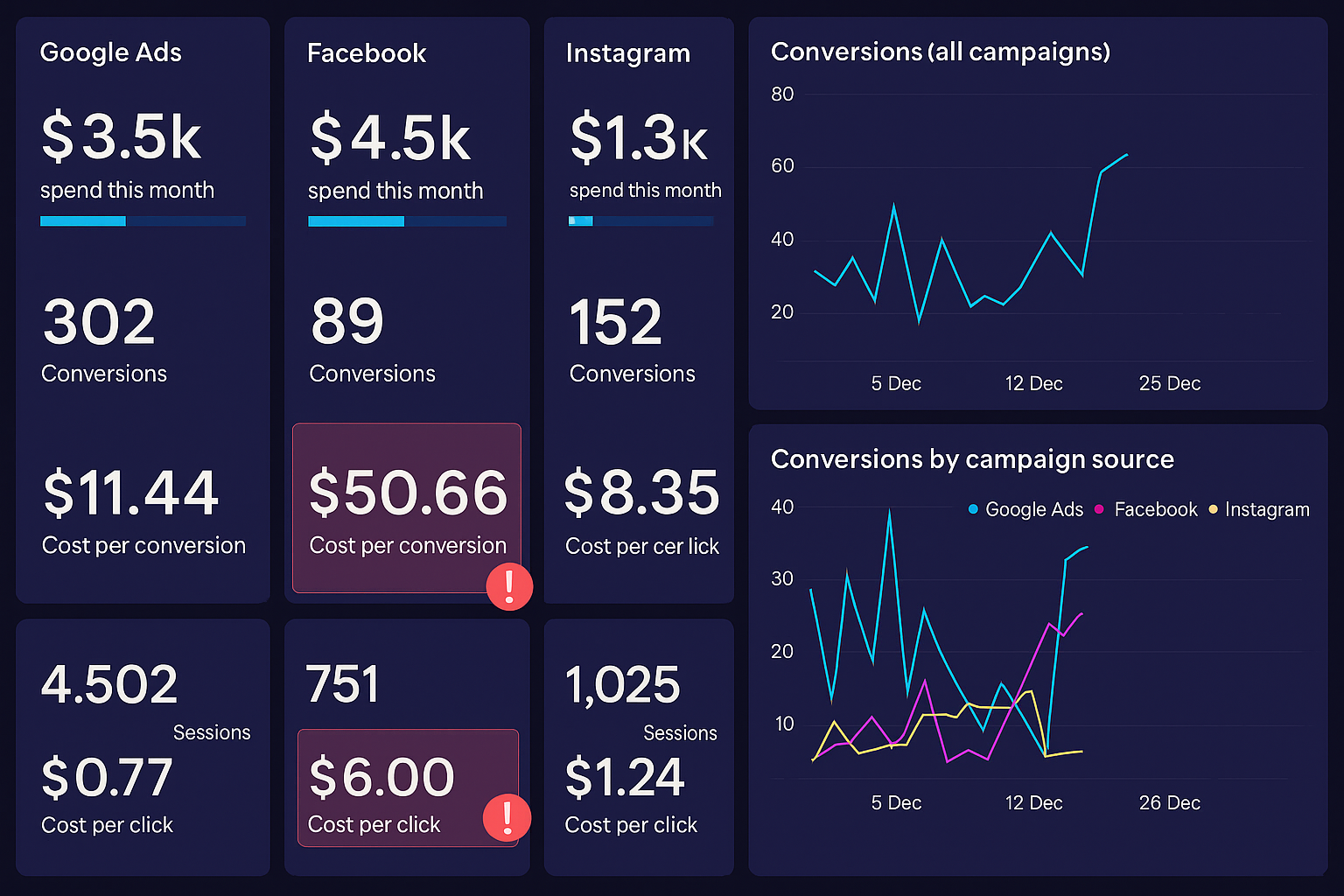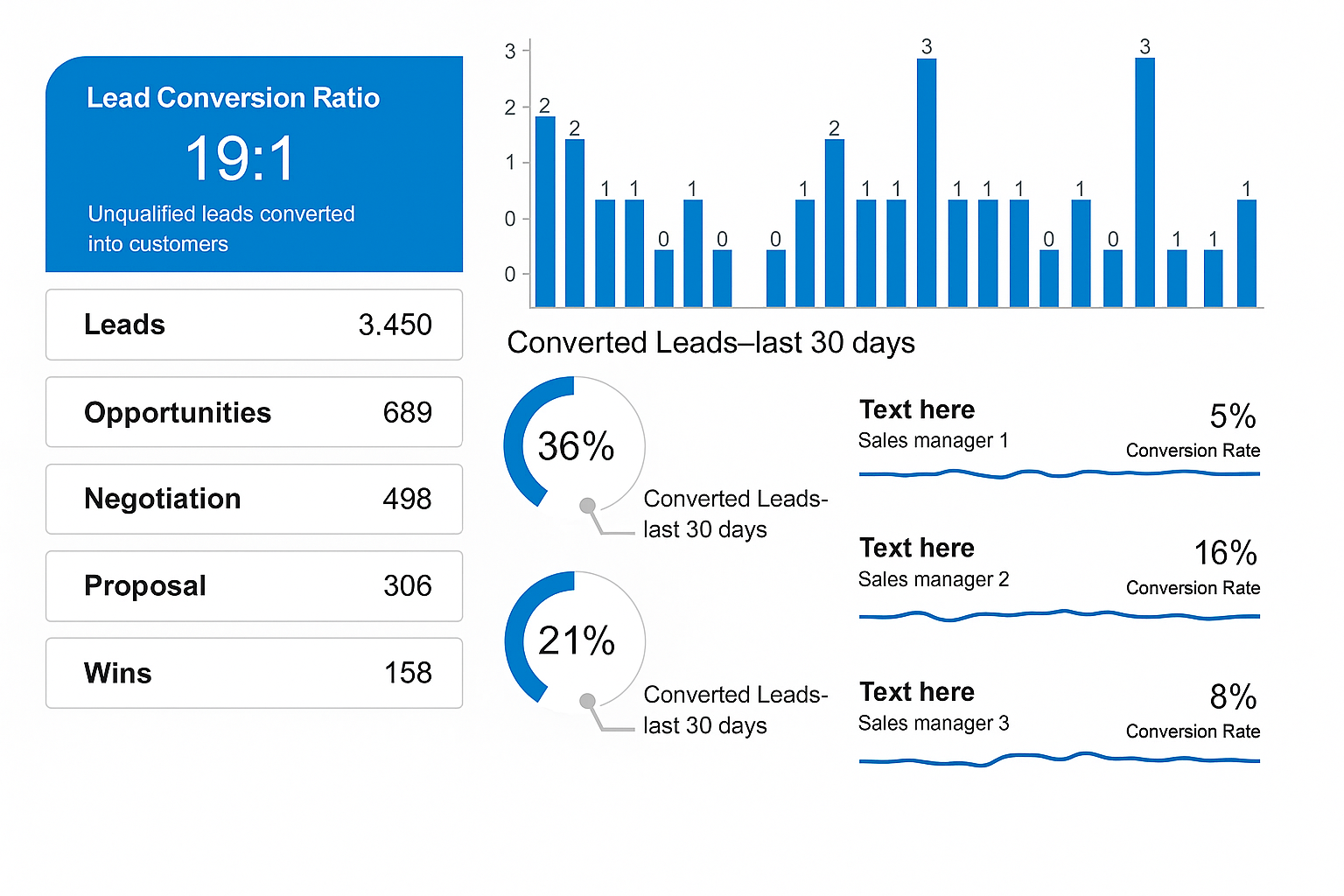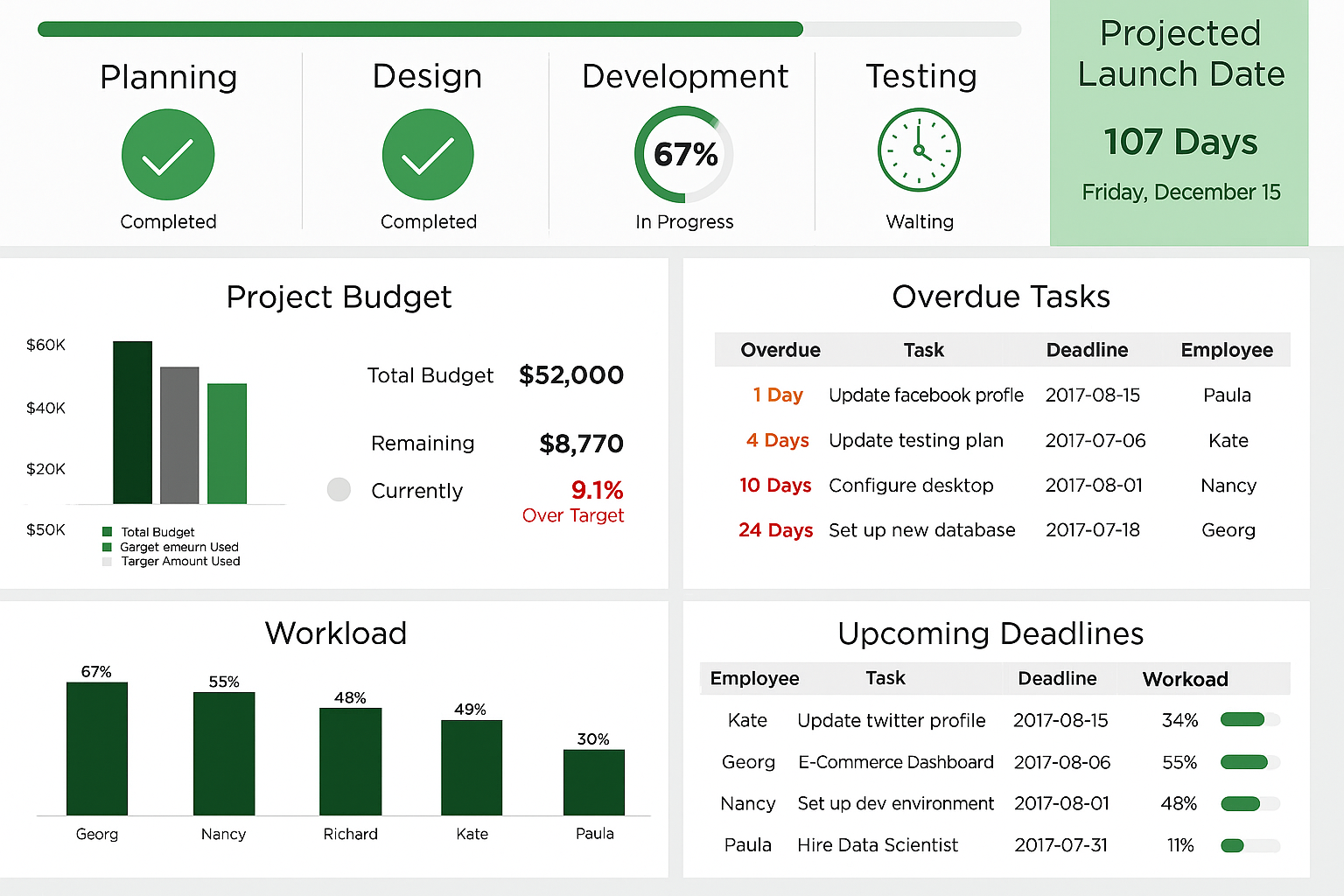What is Data Reporting: Examples & Benefits
Summarize this article with:
✨ AI Generated Summary
Data has become an invaluable asset across various industries. However, with massive volumes of data being generated every second, harnessing its potential can be extremely challenging. Data professionals face mounting pressure to deliver faster insights while managing increasingly complex data landscapes, with many organizations struggling to maintain data quality across disparate sources and systems. This challenge is compounded by evolving regulatory requirements, the need for real-time decision making, and growing demands for self-service analytics capabilities that maintain enterprise-grade security and governance.
Modern data reporting has evolved far beyond static dashboards and scheduled reports. Today's data professionals must navigate AI-powered analytics platforms, implement robust governance frameworks, and deliver insights that are not only accurate but also accessible, secure, and actionable. The convergence of artificial intelligence, cloud-native architectures, and advanced visualization techniques has transformed data reporting from a retrospective function into a predictive and prescriptive capability that drives strategic business outcomes.
In this comprehensive guide, you'll discover how modern data reporting practices can transform your organization's decision-making capabilities while addressing the technical and governance challenges that data professionals encounter daily.
TL;DR: Data Reporting at a Glance
- Modern data reporting has evolved from static dashboards to AI-powered predictive analytics that drive strategic business outcomes and competitive advantage.
- Enterprise organizations are increasingly prioritizing revenue generation and data monetization strategies, with adoption expanding rapidly through the mid-2020s.
- AI integration creates governance complexities requiring specialized frameworks for both structured and unstructured data management across enterprise environments.
- Effective data reporting combines automated insight generation, robust governance, and self-service capabilities while maintaining enterprise-grade security and compliance standards.
What is Data Reporting?
Data reporting involves collecting, analyzing, and presenting data in a meaningful and understandable format that drives informed decision-making across organizations. It encompasses gathering data from multiple sources, such as databases, spreadsheets, APIs, cloud platforms, and other data repositories, then transforming this raw information into actionable insights through systematic analysis and presentation.
The modern approach to data reporting extends beyond traditional static reports to include real-time dashboards, interactive visualizations, and AI-generated narratives that automatically surface key insights and anomalies. This evolution reflects the growing sophistication of data infrastructure, where cloud-native platforms, streaming analytics, and machine learning capabilities enable organizations to process and analyze data at unprecedented scale and speed.
Based on the data you collect over a particular period, you can derive valuable conclusions about your business performance, customer behavior, operational efficiency, and market trends. These findings act as valid inputs for making informed decisions regarding allocating resources, prioritizing strategic initiatives, identifying growth opportunities, and mitigating potential risks that could impact revenue generation and competitive positioning.
The scope of data reporting has also expanded to encompass predictive and prescriptive analytics, where historical patterns inform future projections and recommended actions. This transformation positions data reporting as a strategic function that not only documents past performance but actively shapes future business outcomes through data-driven insights and automated decision support systems.
Why is Data Reporting Important?
Data reporting holds significant value as it offers numerous benefits that transform how organizations operate and compete in today's data-driven marketplace. Let's explore these advantages in detail:
Data-Driven Decision Making
By analyzing and presenting data in a clear and organized form, you gain valuable data-driven insights into various aspects of your business operations. This enables you to make well-informed decisions based on empirical evidence and quantifiable facts rather than intuition or assumptions. Modern data reporting platforms incorporate statistical confidence intervals, trend analysis, and predictive modeling to provide decision-makers with not just what happened, but what is likely to happen and why.
Operational Efficiency
With comprehensive data reporting, you can accurately measure your progress against key performance indicators (KPIs) and operational metrics across multiple business functions. This granular visibility allows you to identify potential bottlenecks, optimize resource allocation, streamline workflows, and eliminate inefficiencies that drain productivity. Advanced reporting systems now include automated anomaly detection and performance benchmarking that continuously monitor operational health and alert stakeholders to deviations from expected patterns, leading to measurable increases in ROI.
Accurate Forecasting
Data reporting enables sophisticated forecasting capabilities based on comprehensive historical data analysis, seasonal patterns, and market trend identification. By leveraging advanced analytics techniques including machine learning algorithms and time-series analysis, you can identify complex patterns and generate informed projections about future outcomes with quantified confidence levels. This predictive capability supports strategic planning, inventory management, financial budgeting, and resource planning decisions that require forward-looking insights.
Clear Communication
By leveraging modern data reporting capabilities, you can transform complex analytical findings into easily digestible insights that resonate with diverse stakeholder groups. Interactive visualizations, automated narrative generation, and customizable dashboard views enhance communication effectiveness across various organizational levels, from executive summaries to detailed operational reports. This improved communication promotes a comprehensive data-driven culture where insights are accessible, understandable, and actionable for all team members regardless of their technical expertise.
Risk Management
Data reporting plays a crucial role in proactive risk identification and mitigation through continuous monitoring of key risk indicators across financial, operational, regulatory, and strategic dimensions. By implementing real-time monitoring systems and automated alerting mechanisms, you can detect emerging risks at their earliest stages and take timely corrective actions to prevent potential adverse outcomes. Modern risk reporting incorporates predictive risk modeling, scenario analysis, and compliance tracking that provide comprehensive risk visibility and support regulatory reporting requirements across multiple jurisdictions and industry standards.
What Are the Different Types of Data Reports?
There are various types of data reports designed to meet diverse organizational needs and support different decision-making contexts:
Real-time Reporting
Real-time reports provide instant or near-instant updates as data changes occur, delivering continuous visibility into critical business metrics and operational performance. This type of reporting proves invaluable when you need to monitor processes continuously, respond to emerging issues immediately, or capitalize on time-sensitive opportunities. Modern real-time reporting systems incorporate streaming analytics, automated alerting, and mobile-responsive dashboards that ensure decision-makers have access to current information regardless of their location or device.
Ad-hoc Reporting
Ad-hoc reports are created on-demand to address specific business questions, investigate unexpected issues, explore new opportunities, or conduct detailed analysis of particular scenarios. These flexible, custom reports allow you to dive deep into specific areas of interest, combining multiple data sources and applying specialized analytical techniques to generate tailored insights precisely when you require them. Advanced ad-hoc reporting platforms now include natural language querying capabilities and AI-assisted analysis that enable business users to generate sophisticated reports without requiring technical expertise.
Regular Reporting
Regular reports follow predetermined schedules, whether daily, weekly, monthly, quarterly, or annually, providing consistent oversight of key metrics and performance indicators that support ongoing business management. They establish baseline performance measurements, track progress against strategic objectives, and ensure systematic monitoring of critical business functions. For instance, an SEO reporting tool helps organize marketing performance data into comprehensive reports that can be shared manually or distributed automatically according to established schedules, keeping stakeholders informed without requiring additional effort from analytical teams.
Descriptive Reporting
Descriptive reports provide comprehensive analysis of historical and current data patterns, offering detailed examination of what happened, when it occurred, and how different factors contributed to observed outcomes. These thorough reports help you gain deep insights into past and current trends, identify areas for improvement, understand customer behavior patterns, and establish performance baselines. A data-driven SEO company relies on comprehensive analytical reports to identify search ranking trends, optimize content strategies, and deliver measurable improvements in organic traffic and conversion rates.
Prescriptive Reporting
Prescriptive reports go beyond presenting historical information to provide actionable recommendations and strategic guidance based on comprehensive data analysis and predictive modeling. They focus on transforming analytical insights into specific next steps, recommended actions, and strategic initiatives that align with organizational goals. By leveraging prescriptive reports, you can make informed decisions and develop data-driven strategies based on evidence-based recommendations, ensuring that your actions optimize for desired outcomes while considering potential risks and resource constraints.
How Do You Create an Effective Data Report?
Creating impactful data reports requires a systematic approach that balances analytical rigor with clear communication and actionable insights:
1. Define the Report's Purpose
Establish clear objectives for your data report and identify the specific audience who will consume and act upon the insights presented. This foundational step allows you to select the most relevant data sources, choose appropriate analytical approaches, and determine the optimal format for presenting information effectively. Different stakeholders require various types of insights and levels of detail, so tailoring the report structure, visualizations, and narrative to address their specific concerns, decision-making authority, and technical sophistication ensures maximum impact and adoption.
2. Identify Key Metrics
Once you understand the strategic purpose and target audience for your data report, carefully select the specific metrics, KPIs, and data points that directly align with your reporting objectives and business questions. The chosen metrics should provide meaningful insights into performance trends, identify areas for improvement, and support the decision-making processes that the report aims to influence. Prioritize metrics that are actionable, measurable, and relevant to the strategic goals while avoiding information overload that can dilute the report's effectiveness and clarity.
3. Ensure Accurate Data Collection
Systematically gather information from all required sources to maintain data accuracy, completeness, and consistency across your analysis. This includes extracting data from website analytics platforms, CRM systems, social media channels, marketing automation tools, financial systems, operational databases, and external data providers. Automated data extraction and integration tools like Airbyte streamline this complex process by providing reliable connectors, data validation capabilities, and transformation features that ensure data quality while reducing manual effort and potential errors.
4. Visualize Data
Incorporate appropriate visual elements to present complex data patterns and relationships in an accessible, intuitive format that facilitates quick understanding and insight discovery. Select visualization types that best represent your data characteristics, whether through interactive dashboards, statistical charts, geographic maps, trend graphs, comparison tables, or performance scorecards. Modern data visualization tools such as Power BI, Looker, Tableau, and Zoho Analytics provide sophisticated capabilities for creating compelling visualizations that engage stakeholders and support effective decision-making processes.
5. Make the Report Actionable
Transcend simple data presentation by providing contextual analysis that explains the significance of findings, identifies meaningful patterns and trends, draws evidence-based conclusions, and offers specific recommendations for improvement. Include executive summaries, key takeaways, and clear action items that address potential concerns, capitalize on opportunities, and guide strategic decisions. Effective actionable reports bridge the gap between analytical insights and business implementation by providing stakeholders with the information, context, and guidance necessary to drive meaningful organizational change and performance improvement.
What Are Common Examples of Data Reporting in Practice?
Below are prevalent examples of data reporting that organizations across industries use to gain comprehensive insights and make strategic decisions:
Financial Performance Reports
Optimizing costs and maximizing profitability remain fundamental objectives for sustainable business operations. Comprehensive financial reports provide detailed insights into revenue streams, expenditure patterns, profit margins, cash flow dynamics, budget variance analysis, and return on investment across different business units, product lines, and geographical markets. These reports enable executives to identify financial trends, optimize resource allocation, monitor fiscal health, and make informed investment decisions.

Marketing Campaign Reports
Marketing effectiveness analysis examines performance across multiple channels including social media platforms, email campaigns, paid advertising, content marketing initiatives, search engine optimization, and offline promotional activities. Key metrics such as impressions, click-through rates, conversion rates, cost per acquisition, customer lifetime value, and engagement rates provide comprehensive visibility into channel effectiveness, campaign ROI, and customer acquisition efficiency. These insights guide marketing budget allocation, campaign optimization, and strategic channel investments.

Sales Leads Reports
Sales performance reports provide comprehensive insights into lead generation effectiveness, prospect qualification processes, conversion funnel performance, and revenue attribution across different sources and channels. These reports track lead sources, qualification criteria, conversion rates, sales cycle duration, deal size progression, and overall revenue contribution by salesperson, territory, product line, and customer segment. This analysis enables sales teams to optimize prospecting strategies, improve conversion processes, and maximize revenue generation efficiency.

Customer Analytics Reports
Customer analytics reports provide deep insights into customer behavior patterns, preferences, satisfaction levels, and engagement trends across multiple touchpoints and interactions. These comprehensive reports examine key performance indicators such as customer lifetime value (CLV), churn rates, retention rates, purchase frequency, average order value, customer satisfaction scores, and segmentation analysis. This customer intelligence enables organizations to personalize experiences, improve product offerings, optimize pricing strategies, and develop targeted retention programs.

Project Management Data Reports
Project management reports deliver comprehensive visibility into project performance across multiple dimensions including timeline adherence, milestone completion, resource utilization, budget performance, quality metrics, and stakeholder satisfaction. These detailed reports track project progress against planned objectives, identify potential risks and bottlenecks, monitor cost performance, and assess team productivity. Project managers use these insights to optimize resource allocation, mitigate risks, ensure delivery timelines, and improve overall project success rates.

How Are AI and Augmented Analytics Transforming Data Reporting?
Artificial intelligence and augmented analytics are revolutionizing data reporting by automating insight generation, enabling natural language interactions, and providing predictive capabilities that transform static reports into dynamic intelligence platforms. These technologies address the growing complexity of data environments while democratizing access to sophisticated analytics across organizational levels.
Natural Language Processing and Automated Insight Generation
Modern data reporting platforms now incorporate natural language processing capabilities that allow users to query data using conversational language, automatically generating visualizations and insights without requiring technical expertise. AI-powered systems can interpret questions like "What were our top-performing products last quarter?" and instantly produce relevant charts, trend analysis, and contextual explanations. These platforms utilize machine learning algorithms to understand user intent, identify relevant data sources, and present findings through automatically generated narratives that explain patterns, highlight anomalies, and suggest areas for further investigation.
Automated insight generation extends beyond simple query responses to include proactive pattern detection and anomaly identification. AI systems continuously monitor data streams, automatically flagging unusual trends, performance deviations, and emerging opportunities that might otherwise go unnoticed. This capability transforms reporting from a reactive function to a proactive intelligence system that surfaces critical insights before they become apparent through traditional analysis methods.
Predictive and Prescriptive Analytics Integration
The integration of machine learning models into reporting platforms enables predictive capabilities that forecast future trends, identify potential risks, and recommend optimal actions based on historical patterns and current conditions. Modern reporting tools incorporate ensemble modeling techniques that automatically evaluate multiple algorithms before selecting optimal approaches for specific datasets and business contexts.
Prescriptive analytics takes prediction further by generating specific recommendations and action plans based on comprehensive scenario analysis. These systems simulate thousands of potential outcomes, considering various constraints and objectives to identify optimal strategies. For example, supply chain reporting systems can predict inventory needs while simultaneously recommending specific purchasing decisions, supplier selections, and distribution strategies that optimize costs while maintaining service levels.
Explainable AI for Transparent Decision-Making
As AI becomes more prevalent in data reporting, explainable AI capabilities ensure that algorithmic decisions remain transparent and auditable. Modern platforms incorporate visualization techniques that demonstrate how AI models arrive at conclusions, showing feature importance, confidence intervals, and alternative scenarios considered. This transparency proves crucial for regulatory compliance, strategic decision validation, and building stakeholder trust in AI-generated insights.
Explainable AI systems generate accompanying documentation that traces the logic behind recommendations, providing business users with sufficient context to validate findings and make informed decisions about implementation. This capability bridges the gap between sophisticated analytical techniques and practical business application, ensuring that AI enhances rather than replaces human judgment in critical decision-making processes.
What Role Does Data Governance and Security Play in Modern Reporting?
Data governance and security have evolved from compliance requirements to strategic enablers that ensure data reporting delivers trustworthy, actionable insights while protecting organizational assets and maintaining regulatory compliance. Modern governance frameworks integrate seamlessly with reporting workflows, providing automated quality assurance, access controls, and audit capabilities that enhance rather than constrain analytical capabilities.
Metadata Management and Data Lineage Tracking
Comprehensive metadata management systems now serve as the foundation for trustworthy data reporting by providing complete visibility into data sources, transformations, and dependencies. These systems automatically track data lineage from source systems through all processing steps to final reports, enabling users to understand exactly how each metric was calculated and validated. When stakeholders question report findings, lineage tracking allows immediate verification of calculation methods, data quality issues, and potential sources of discrepancies.
Modern metadata platforms incorporate AI-powered classification systems that automatically identify sensitive data, apply appropriate security controls, and ensure compliance with privacy regulations. This automated approach enables organizations to maintain comprehensive governance without manual oversight of every data element, supporting scalable reporting operations while ensuring data protection requirements are consistently met.
Real-Time Data Quality Monitoring
Advanced data quality frameworks now provide continuous monitoring of data accuracy, completeness, and consistency throughout the reporting pipeline. These systems employ machine learning algorithms to detect anomalies, validate data against business rules, and automatically flag potential quality issues before they impact report accuracy. Real-time monitoring enables immediate notification when data quality thresholds are exceeded, allowing rapid correction before reports reach stakeholders.
Quality monitoring systems also provide confidence scores for reported metrics, enabling users to assess the reliability of different data elements and make informed decisions about how to interpret and act upon findings. This transparency builds trust in reporting outputs while enabling more sophisticated risk management around data-driven decisions.
Privacy-Preserving Analytics and Compliance Automation
Modern reporting platforms incorporate privacy-preserving techniques such as differential privacy and data masking that enable comprehensive analysis while protecting individual privacy and maintaining regulatory compliance. These approaches allow organizations to generate valuable insights from sensitive data without exposing personally identifiable information or violating data protection regulations.
Automated compliance systems continuously monitor data usage, access patterns, and report distribution to ensure ongoing adherence to regulatory requirements across multiple jurisdictions. These systems generate audit trails, compliance reports, and risk assessments that demonstrate due diligence to regulators while minimizing the administrative burden on analytical teams.
How Can Airbyte Streamline Your Data Reporting Process?
To build comprehensive data reports that drive meaningful business outcomes, you must efficiently collect, integrate, and transform data from diverse sources across your organization. Managing this complexity manually creates bottlenecks, introduces inconsistencies, and diverts valuable engineering resources from strategic initiatives to operational maintenance. This is where modern data integration platforms like Airbyte provide transformative value.

Airbyte's comprehensive data integration capabilities address the critical infrastructure requirements that enable sophisticated data reporting across enterprise environments. The platform's open-source foundation combined with enterprise-grade security and governance features positions it as an ideal solution for organizations seeking to modernize their data reporting capabilities without vendor lock-in or excessive operational complexity.
Key features that enhance data reporting workflows include:
- Extensive Pre-built Connector Library – Access to over 600+ connectors covering databases, APIs, cloud platforms, and SaaS applications with zero custom code required, enabling rapid integration of diverse data sources essential for comprehensive reporting.
- Connector Development Kit (CDK) – Build custom connectors for proprietary systems and specialized data sources in approximately 10 minutes, ensuring that unique organizational data requirements don't create reporting blind spots or delays.
- Support for Diverse Data Types – Seamlessly integrate structured data from relational databases with unstructured data from documents, logs, and APIs, providing the comprehensive data foundation necessary for modern analytics and reporting initiatives.
- Change Data Capture (CDC) Capabilities – Efficiently replicate incremental changes from source systems, enabling real-time and near-real-time reporting while minimizing resource consumption and maintaining data freshness across reporting pipelines.
- Developer-Friendly Interfaces – Comprehensive API access, Terraform Provider for infrastructure automation, and PyAirbyte Python library for programmatic pipeline management that integrates seamlessly with existing development workflows and reporting tool chains.
- Advanced Data Transformation Integration – Native integration with dbt for sophisticated data modeling, transformation, and quality validation that ensures reporting data meets business requirements and maintains analytical accuracy.
- Enterprise-Grade Security Framework – Comprehensive encryption for data in transit and at rest, role-based access controls, audit logging capabilities, and compliance support for SOC 2, GDPR, and HIPAA requirements that enable secure reporting across regulated industries.
The platform's flexible deployment options support diverse organizational requirements, from cloud-native implementations that provide rapid deployment and automatic scaling to self-managed enterprise deployments that maintain complete control over data processing and storage locations. This flexibility ensures that data reporting initiatives can proceed without compromising existing security postures or compliance requirements.
Wrapping Up
Data reporting has evolved from a retrospective function into a strategic capability that combines historical analysis with predictive insights, real-time monitoring, and automated decision support. Modern reporting practices leverage artificial intelligence for insight generation, implement robust governance frameworks for data quality and security, and utilize cloud-native architectures that scale with organizational growth and complexity.
The integration of AI and augmented analytics transforms how organizations generate and consume insights, enabling natural language interactions, automated anomaly detection, and prescriptive recommendations that guide strategic decisions. Simultaneously, advanced governance and security frameworks ensure that reporting outputs remain trustworthy, compliant, and protected against emerging threats while supporting self-service analytics initiatives that democratize data access.
As the volume and variety of organizational data continue expanding exponentially, automating data collection, integration, and report generation becomes essential for maintaining competitive advantage. Modern data integration platforms like Airbyte streamline these complex processes, ensuring timely access to comprehensive, accurate data that supports sophisticated reporting requirements while reducing operational overhead and technical debt.
The future of data reporting lies in the convergence of automated insight generation, embedded analytics, and real-time decision support systems that transform data from a historical record into a forward-looking strategic asset. Organizations that master these capabilities will gain significant advantages in operational efficiency, customer insight, and market responsiveness that define success in increasingly data-driven competitive environments.
FAQs
What is the difference between data reporting and data analysis?
Data reporting presents what happened using summaries and dashboards, while data analysis explores why and how it happened. Reporting organizes data for visibility; analysis interprets it to uncover patterns, insights, and recommendations that guide strategic, data-driven decisions.
What is often included in a data report?
A data report typically includes an executive summary, key metrics, trend analyses, visuals like charts, data quality indicators, and contextual explanations. It also documents data sources, methodologies, and actionable recommendations to translate findings into clear, evidence-based business insights.
What are some common challenges in data reporting?
Organizations commonly face challenges such as maintaining data accuracy, managing large volumes, handling schema changes, ensuring governance, balancing self-service with security, and keeping reports actionable rather than purely descriptive while integrating data across diverse sources efficiently and consistently.
Further reading:

.webp)
